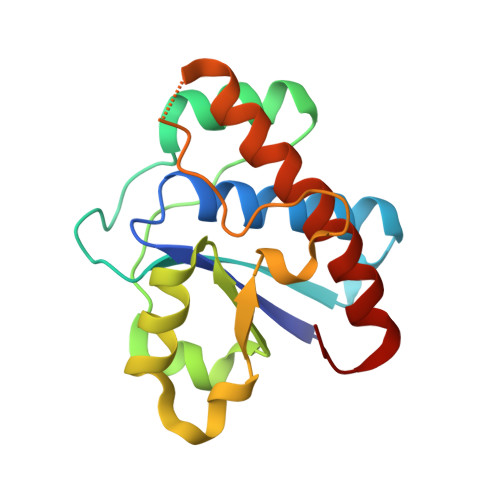Crystal structure and putative substrate identification for the Entamoeba histolytica low molecular weight tyrosine phosphatase.
Linford, A.S., Jiang, N.M., Edwards, T.E., Sherman, N.E., Van Voorhis, W.C., Stewart, L.J., Myler, P.J., Staker, B.L., Petri, W.A.(2014) Mol Biochem Parasitol 193: 33-44
- PubMed: 24548880
- DOI: https://doi.org/10.1016/j.molbiopara.2014.01.003
- Primary Citation of Related Structures:
3IDO, 3ILY, 3JS5, 3JVI - PubMed Abstract:
Entamoeba histolytica is a eukaryotic intestinal parasite of humans, and is endemic in developing countries. We have characterized the E. histolytica putative low molecular weight protein tyrosine phosphatase (LMW-PTP). The structure for this amebic tyrosine phosphatase was solved, showing the ligand-induced conformational changes necessary for binding of substrate. In amebae, it was expressed at low but detectable levels as detected by immunoprecipitation followed by immunoblotting. A mutant LMW-PTP protein in which the catalytic cysteine in the active site was replaced with a serine lacked phosphatase activity, and was used to identify a number of trapped putative substrate proteins via mass spectrometry analysis. Seven of these putative substrate protein genes were cloned with an epitope tag and overexpressed in amebae. Five of these seven putative substrate proteins were demonstrated to interact specifically with the mutant LMW-PTP. This is the first biochemical study of a small tyrosine phosphatase in Entamoeba, and sets the stage for understanding its role in amebic biology and pathogenesis.
- Department of Biochemistry and Molecular Genetics, University of Virginia Health System, Charlottesville, VA 22908, USA. Electronic address: asl2c@virginia.edu.
Organizational Affiliation:

















